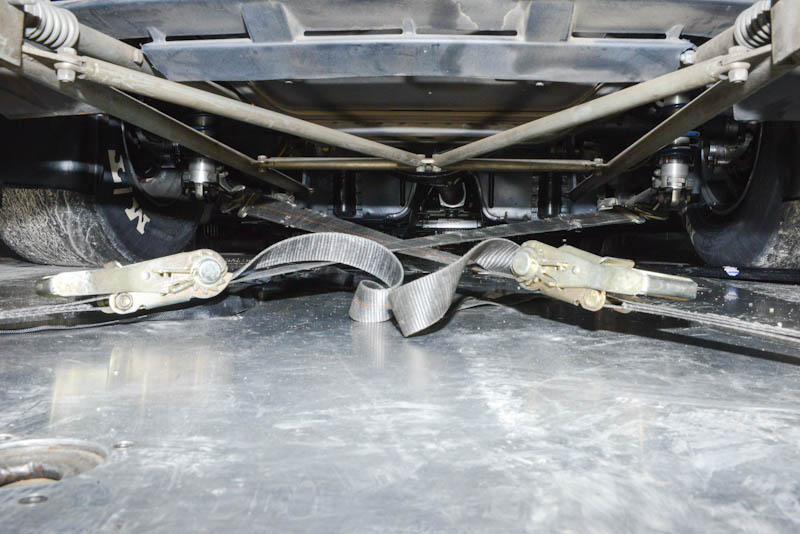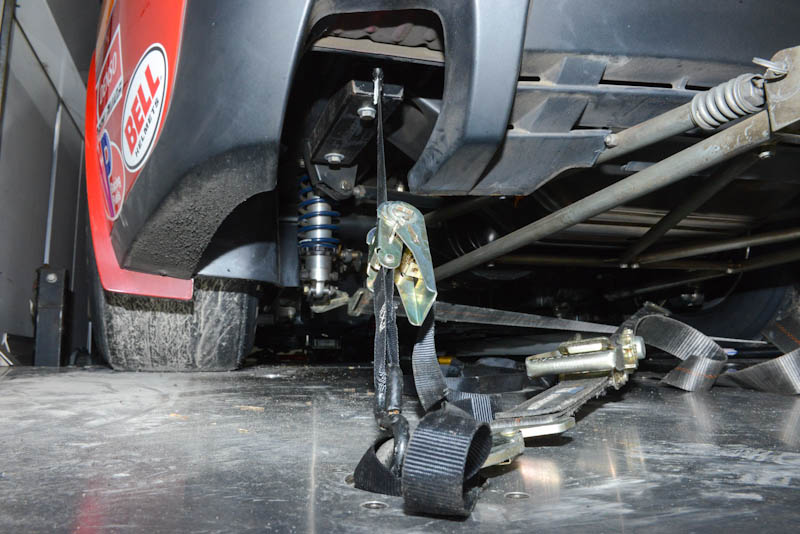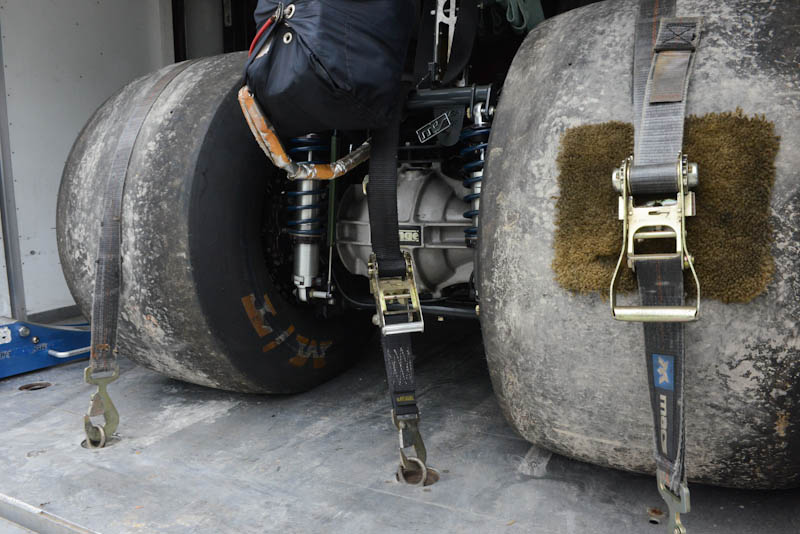TECH: THE PROPER WAY TO TIE A CAR DOWN IN A TRAILER


There is a good and bad thing about the use of an enclosed trailer.
The good part obviously is that your pride and joy stays safe and secure inside. The bad part is that it’s not always secure especially while traveling on the fine American highway system.
The problem is such that you really have no idea what’s happening inside your trailer as you ride down the road. We all have stories of things falling off walls and benches, tie downs coming loose, cars moving around, etc. If you don’t have a “story” yet, you will at some point in the future. All of which leads to this, tying your car down properly inside your trailer may be of equal importance to securing your seat belts before a run. Each car has their own idiosyncrasies and finding yours is the key. However, there are some basic steps you can follow to at least help alleviate some of the concerns.

While you can choose to follow some of the advice we impart here, one important facet we can’t stress enough is to stop from time to time to inspect the interior of your trailer. After the first hour of towing, things tend to settle around. It’s then where you’ll sometimes find things not in their original position, one of which may be your race car. On a long-distance trip, stopping every couple of hours may find more of the same “settling.”
When to comes to tie downs, first of all, the use of the proper sized ratchet tie downs and their accompanying straps is a must. We’ve all seen very light-duty ratchet straps which may be fine for securing “light” objects but are certainly not useful for a 3,000-pound or so door car. Two-inch wide tie down straps are generally rated based on their hardware. But the use of four of them to tie a car down in a trailer should be a minimum must. Tying down all four corners with the straps crisscrossed is your best bet.
One other issue involves just where to hook the tie downs to your chassis. Most people will tie the front to a chassis member while in the rear, the tie down is attached to the rear end assembly. The only concern in the rear is that the car can still oscillate up and down on the suspension. This up and down movement can still allow the car to move around, not to mention the wear and tear it places on your shock absorbers. A fix for this is another separate strap which binds the chassis down to the trailer floor.

“When I had my door car, I left one morning for a one-hour tow to the track,” says S&W Race Cars’ Randy Krause. “When I got to the track and was undoing the rear tie down straps, I happen to touch the shock absorber and it was hot, no doubt from bouncing up and down. In addition to it allowing the car to move around, it can also be the cause for wear and tear on the shock.”
Dragsters are a slightly different story but really much of the same. Most dragster owners will run a strap over both rear tires along with a single strap over the front end. However, due to the length of the dragster, it’s not uncommon for the chassis to flex somewhat. The use of an air-filled rubber bladder chassis stabilizer under the seat area of the chassis helps with unwanted flex which can result in cracks over time to the chassis tubing.
When I got my first dragster, the late Scott Weney of S&W Race Cars showed me how to tie down the car,” added Krause. “He suggested either the air bag under the seat or a padded block of wood. In either case, a strap from the chassis down to the floor is used to pull the car down to the wood or bag, which also eliminates the chassis from bouncing on the shocks, in the case of a four-link dragster.”
Obviously driving on smooth roads would do wonders, but somehow that’s not an option today. The alternative is to use proper care to secure your racer inside a trailer, with much the same care even with the use of an open trailer. It’s your investment you’ll be ensuring.

Want an easier @competitionplus mobile viewing experience with notifications of new stories? #DragRacingNews - DOWNLOAD OUR APP FOR FREE - https://t.co/f7mo0B9zVm pic.twitter.com/CtFD221qwg
— Competition Plus (@competitionplus) January 6, 2020






































